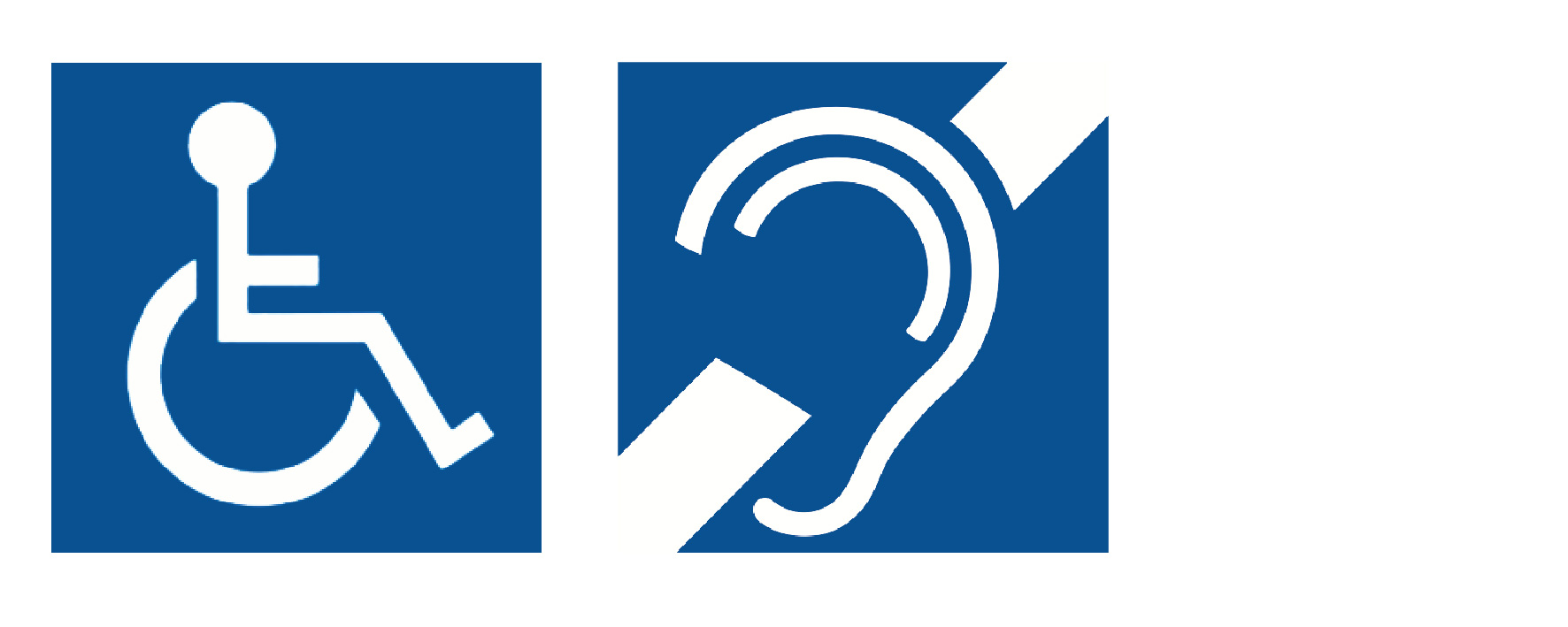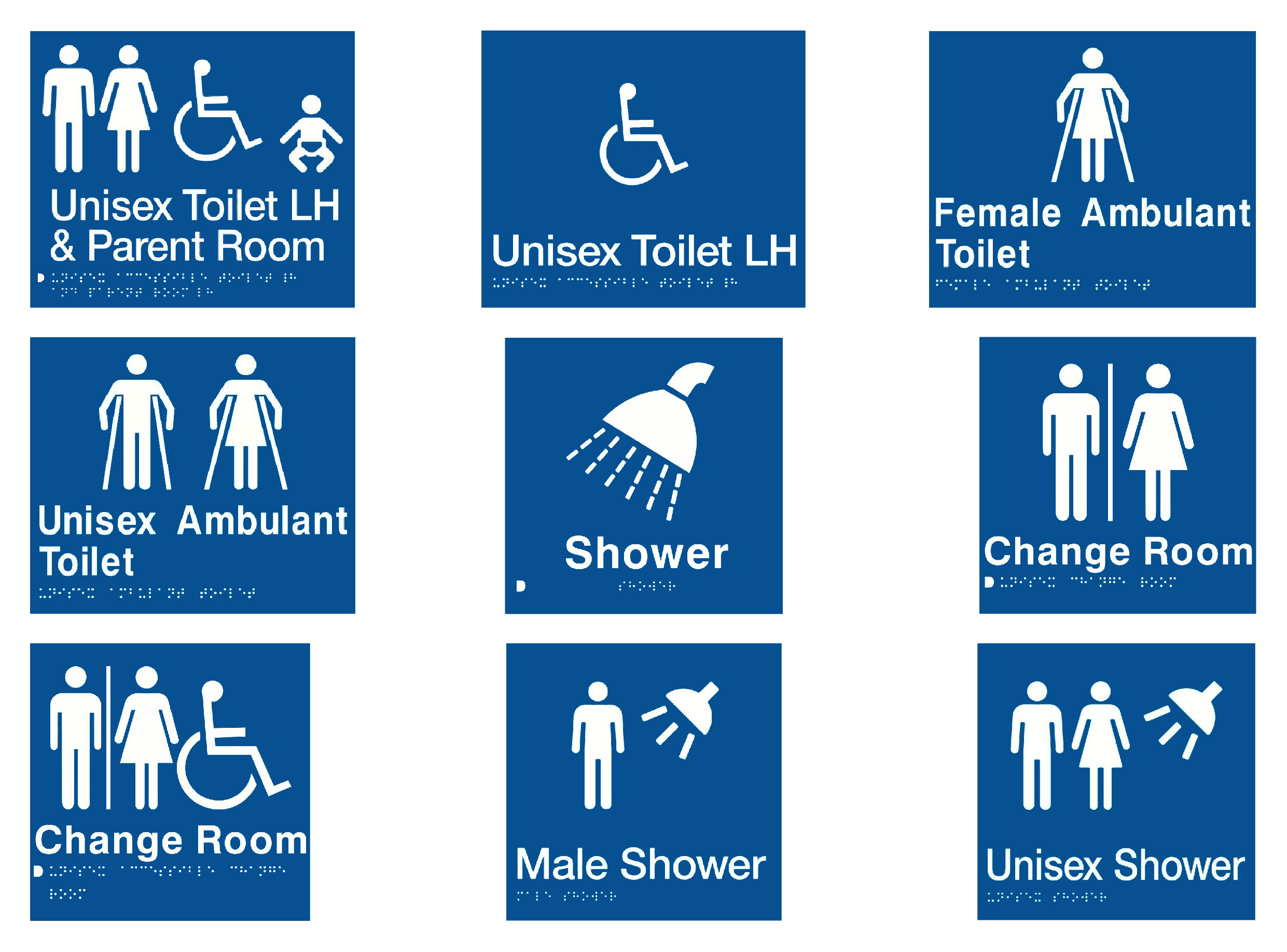AS12 - Amenity Signage
| Issue Date | Effective Date | Version |
|---|---|---|
| 19/09/2017 | 01/01/2018 | 1.0 |
Purpose
To establish guidance for the design of signs in and around amenities within Aquatic Facilities
Form of Signs
In a building required to be accessible:
- Braille and tactile signage complying with Specification D3.6 of the Building Code of Australia and incorporating the international symbol of access or deafness, as appropriate, in accordance with AS 1428.1 must identify each
- sanitary facility, except a sanitary facility within a sole-occupancy unit in a Class 1b or Class 3 building; (See AS 1428.1 for Building Classes) and
- space with a hearing augmentation system; and
- Signage including the international symbol for deafness in accordance with AS 1428.1 must be provided within a room containing a hearing augmentation system identifying -
- the type of hearing augmentation; and
- the area covered within the room; and
- if receivers are being used and where the receivers can be obtained; and
- Signage in accordance with AS 1428.1 must be provided for accessible unisex sanitary facilities to identify if the facility is suitable for left or right handed use; and
- Signage to identify an ambulant accessible sanitary facility in accordance with AS 1428.1 must be located on the door of the facility; and
- Where a pedestrian entrance is not accessible, directional signage incorporating the international symbol of access, in accordance with AS 1428.1 must be provided to direct a person to the location of the nearest accessible pedestrian entrance; and
- Where a bank of sanitary facilities is not provided with an accessible unisex sanitary facility, directional signage incorporating the international symbol of access in accordance with AS 1428.1 must be placed at the location of the sanitary facilities that are not accessible, to direct a person to the location of the nearest accessible unisex sanitary facility.
Braille & Tactile Signs
This specification sets out the requirements for the design and installation of Braille and tactile signage as required by D3.6. of the Building Code of Australia.
Location of Braille and Tactile Signs
Signs including symbols, numbering and lettering must be designed and installed as follows:
- Braille & tactile components of a sign must be located not less that 1200mm and not higher than 1600mm above the floor or ground surface.
- Signs with single lines of characters must have the line of tactile characters not less than 1250mm and not higher than 1350mm above the floor or ground surface.
- Signs identifying rooms containing features or facilities listed in D3.6 must be located
- on the wall on the latch side of the door with the leading edge of the sign located between 50mm and 300mm from the architrave; and
- where this is not possible, the sign may be placed on the door itself.
Braille & Tactile Sign Specification
- Tactile characters must be raised or embossed to a height of not less than 1mm and not more than 1.5mm
- Sentence case (upper case for the first letter of each main word and lower case for all other letters) must be used for all tactile characters, and:
- upper case tactile characters must have a height of not less than 15mm and not more than 55mm; and
- lower case tactile characters must have a height of 50% of the related upper case characters
- Tactile characters, symbols, and the like, must have rounded edges.
- The entire sign, including any frame, must have all edges rounded.
- The background, negative space or fill of signs must be of matt or low sheen finish.
- The characters, symbols, logos and other features on signs must be matt or low sheen finish.
- The minimum letter spacing of tactile characters on signs must be 2mm.
- The minimum word spacing of tactile characters on signs must be 10mm.
- The thickness of letter strokes must be not less than 2mm and not more than 7mm.
- Tactile text must be left justified, except that single words may be centre justified.
- Tactile text must be Arial typeface.
Luminance Contrast
The following applies to luminance contrast:
- The background, negative space, fill of a sign or border with a minimum width of 5mm must have a luminance contrast with the surface on which it is mounted of not less than 30%.
- Tactile characters, icons and symbols must have a minimum luminance contrast of 30% to the surface on which the characters are mounted.
- Luminance contrasts must be met under the lighting conditions in which the sign is to be located.
Lighting
Braille and tactile signs must be illuminated to ensure luminance contrast requirements are met at all times during which the sign is required to be read.
Braille
The following applies to Braille:
- Braille must be grade 1 braille (uncontracted) in accordance with the criteria set out by the Australian Braille Authority.
- Braille must be raised and domed.
- Braille must be located 8mm below the bottom line of text (not including descenders).
- Braille must be left justified.
- Where an arrow is used in the tactile sign, a solid arrow must be provided for Braille readers.
- On signs with multiple lines of text and characters, a semicircular.
- Braille locator at the left margin must be horizontally aligned with the first line of Braille text.
Braille and tactile signage complying with Specification D3.6 and incorporating the international symbol of access or deafness, as appropriate, in accordance with AS 1428.1 must identify each -
- Signs must be located not less than 1200mm and not higher then 1600mm above the floor or ground surface.
- Signs with single lines of characters must have the line of tactile characters not less than 1250mm and not higher than 1350mm above the floor or ground surface.
- Signs identifying rooms containing features or facilities listed in D3.6 must be located -
- On the wall on the latch side of the door with the leading edge of the sign located between 50mm and 300mm from the architrave; and
- In the event of insufficient latch side dimension, a sign may be placed on the non-latch side of the door; and
- Where (I) or (II) is not possible, the sign may be placed on the door itself.
- Signs identifying paths of travel must be placed so they are located directly ahead in the direction of travel. Where one wall continues in the direction of travel and the other forms a corner, the sign must be placed on the continuing wall.
International Symbols
Examples of Signage
References
- Extracted from the NCC 2016 BCA Volume One. Used with permission from the Australian Building Codes Board and remains copyright material of the Australian Building Codes Board. www.abcb.gov.au


